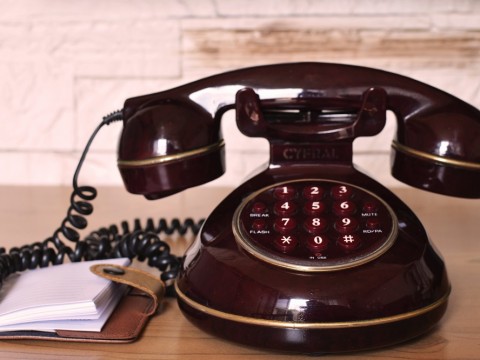6 Unusual Ways to Send a Message
Broadband is connecting cultures across the globe, but conversation hasn’t always been so straightforward.

How many different methods of communication can you think of?
In this modern, technology-focussed world, your thoughts may immediately fly to texting, Facebook messaging, email and video calls. While these rapidly-developing communicative tools are connecting cultures and individuals across the globe, conversation hasn’t always been so straightforward.
We’ve put together some lesser-known methods of communication from around the world and across history - testament to the amazing power of the human race to share knowledge in unusual ways!
Morse Code
Morse code is a unique method of communication in that it can be shared both visually and acoustically. Whereas we most commonly think of the code as a series of dots and dashes, messages encrypted in morse code can also be sent and received as flashes of light that the code originally found popularity when it was invented by Samuel Morse in the 1830s, as part of his electrical telegraph system.
Morse code is been used by pilots, air traffic controllers, and the navigation officers of ships, but can also be used and understood easily by enthusiasts at home.
Learn how to use Morse code here, and give it a try with a torch and some patient friends. Before you know it, you’ll be transmitting encrypted messages as easily as you send emails!
Carrier Pigeons
Pigeon post has its roots in ancient Persian culture, but is still used by hobbyists and photographers today!
This communication method relies on the instinctual ability of homing pigeons to find their way back to a place of origin, and has thus been used by military campaigners, explorers and island dwellers hoping for news from the mainland. One particular homing pigeon named Cher Ami was even awarded a Croix de Guerre medal for bravery, after she delivered a vital message to American troops in WWII despite being shot and blinded and losing a leg.
Don’t go tying your message to just any pigeon you find on the street, though! Homing pigeons are selectively bred for their ability to navigate over long distances.
Message Sticks
The Aboriginal people of Australia have over 200 distinct languages between them, without a traditional writing system to record messages. They do, however, have a distinctive art style which has become an intrinsic aspect of communications between tribes.
For tens of thousands of years, Aboriginal messengers have carried carved or painted sticks to identify themselves and their announcements to neighbouring groups via symbols and images that were usually understood regardless of the different spoken languages between tribes. While conveying messages through a series of small pictures may seem alien to us, the rise of emojis suggests that the drive to communicate via symbols is something universal!
Scalp Tattoos
Yes, you read correctly. Despite all the encryption methods that keep our data private today, sending secret messages via hidden tattoos may still be history’s most ingenious method of secure communication.
In 499 BC, the Persian tyrant Histiaeus sent plans for a revolution to his nephew by shaving the head of his most trusted slave, tattooing a message onto his scalp, and then waiting for the hair to grow back again. He then sent the slave to his nephew with instructions to shave his head once he arrived. If you can convince enough friends to let you shave their heads, your days of dependence on email and instant messaging may be over!
Silk and Wax
If your message is too important to entrust to the Royal Mail, you could consider writing it on silk, then rolling the silk into a ball, coating it in wax, then swallowing it.
While the idea of retrieving the message is unthinkably awful, this is something that ancient Chinese messengers really did! Silk’s natural durability and ability to be rolled up very small also made it the medium of choice for WWII pilots, who often carried secret silk maps in case they were shot down.
Yodelling
If your friend won’t pick up the phone or respond to your Facebook messages, maybe it’s time to try yodelling. This somewhat comical form of communication is best known around the Swiss alps as a way of communicating over large distances.
It was originally used by alpine shepherds calling their flocks or communicating with one another across valleys, but has since become a part of the region’s musical tradition. Yodelling can also be heard in music from across the globe, from the Baltic states to Central Africa. We can’t guarantee that you’ll be good at it, but you’ll certainly grab someone’s attention!
It’s clear that the human brain has no end of ingenuity when it comes to expressing feelings and sharing knowledge. While a lot of these ancient methods of communication have changed history, we’d still put our money on a nice long phone call or an informative email as your best bet for keeping in touch these days.
Make sure that you’ve got reliable, affordable communications at your fingertips by contacting our friendly sales team here or on 0333 210 4290. It sure beats shaving your head or swallowing wax balls!

